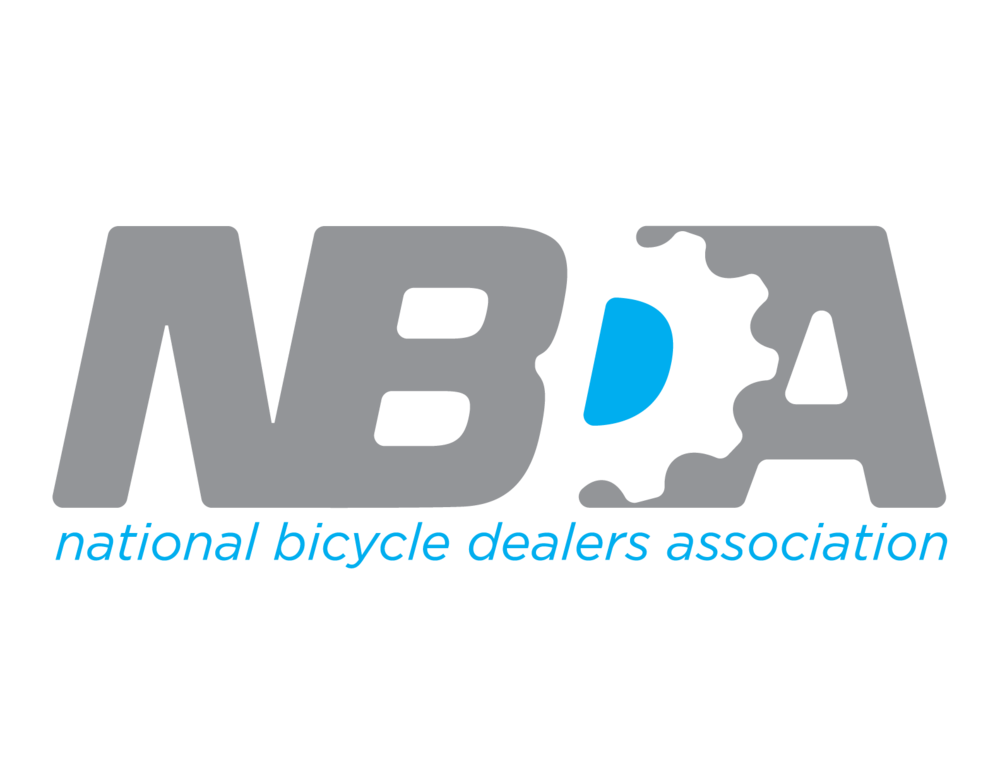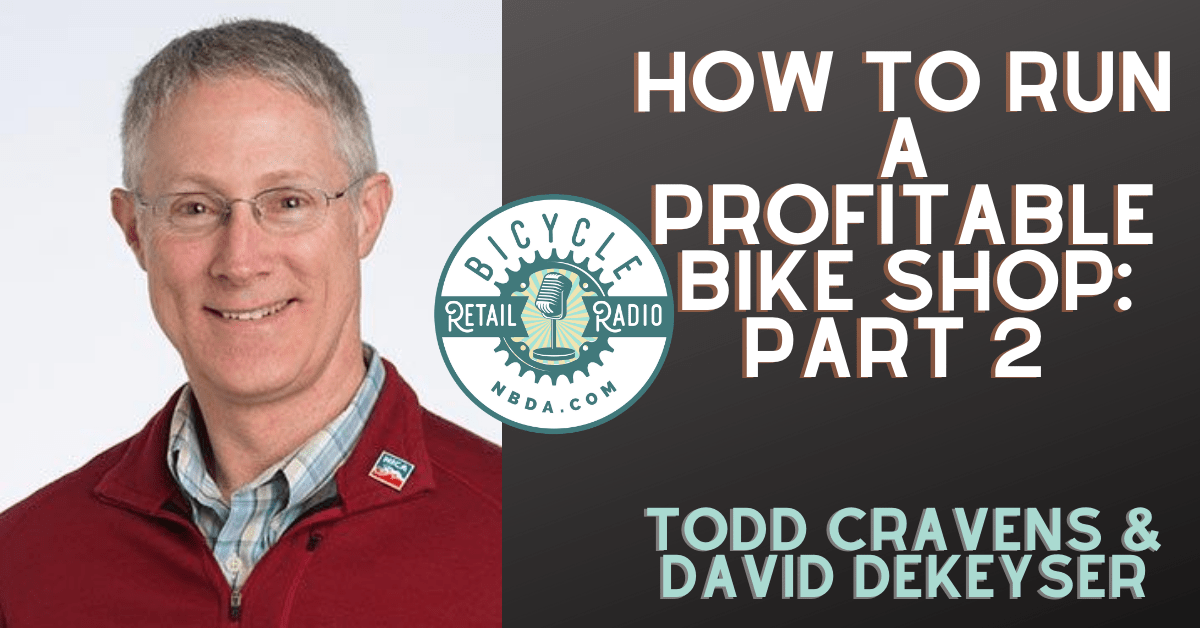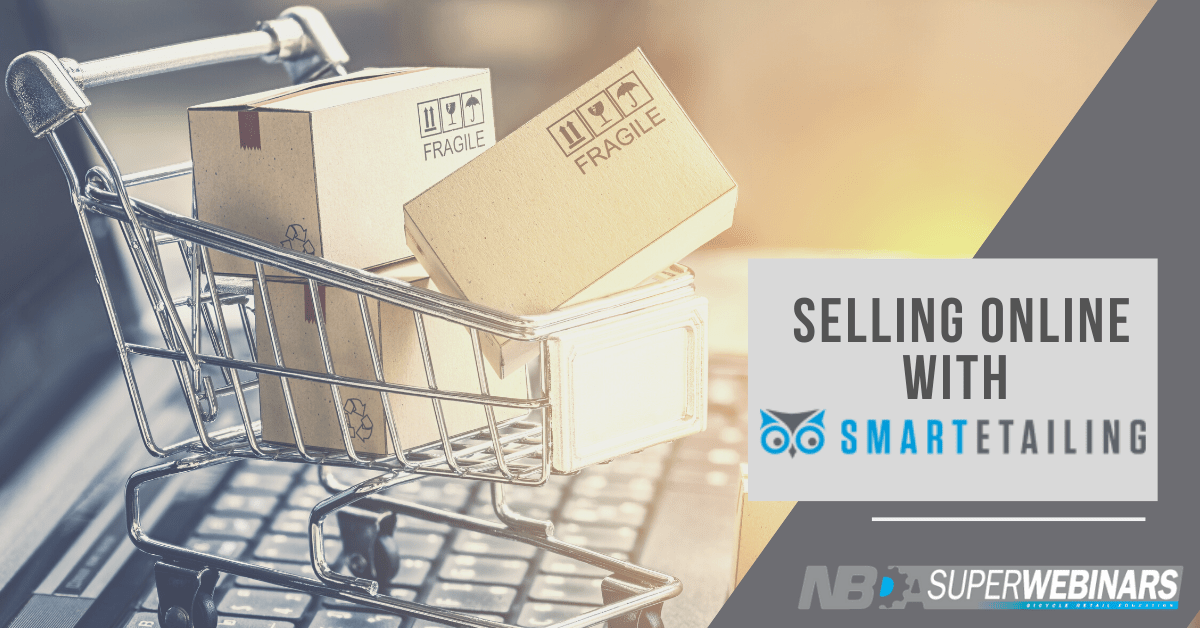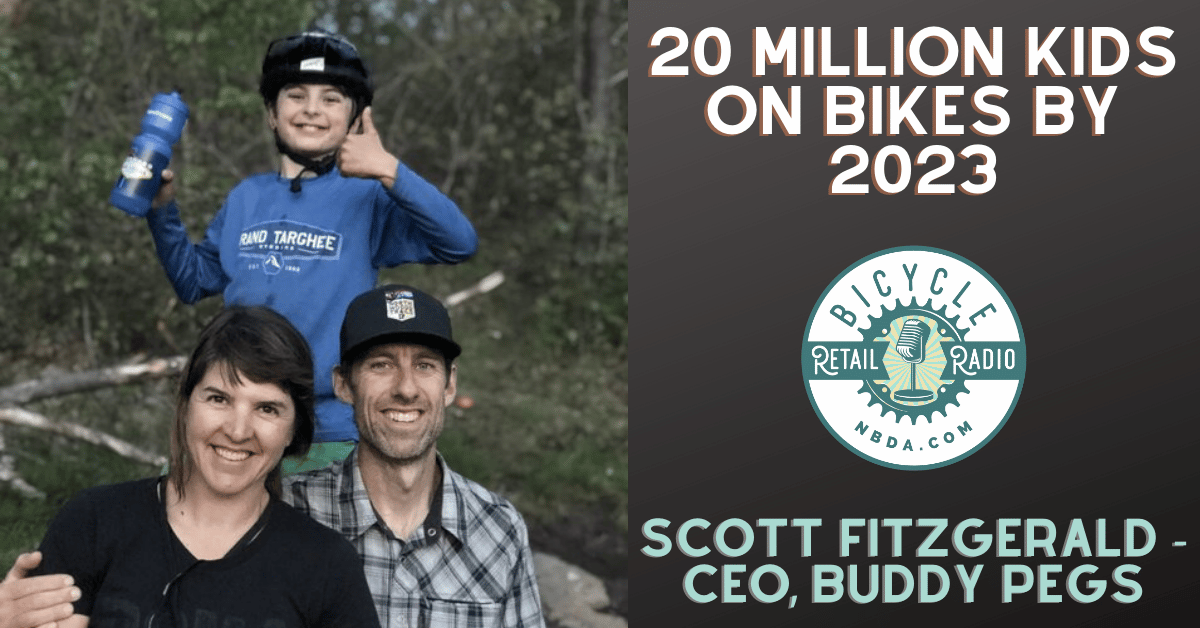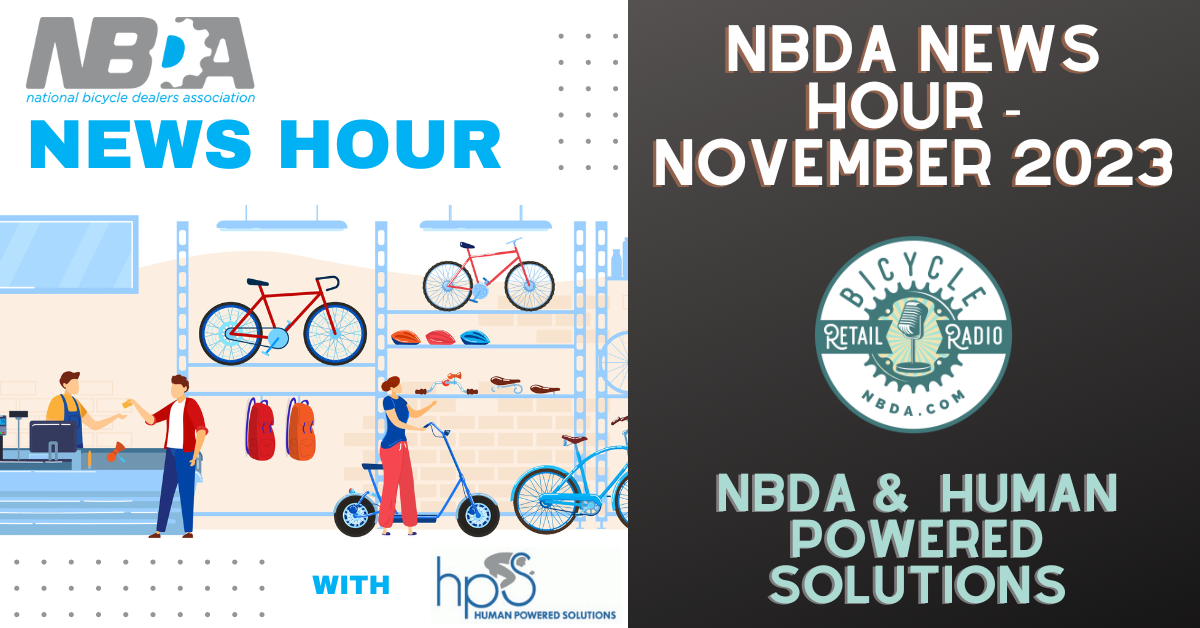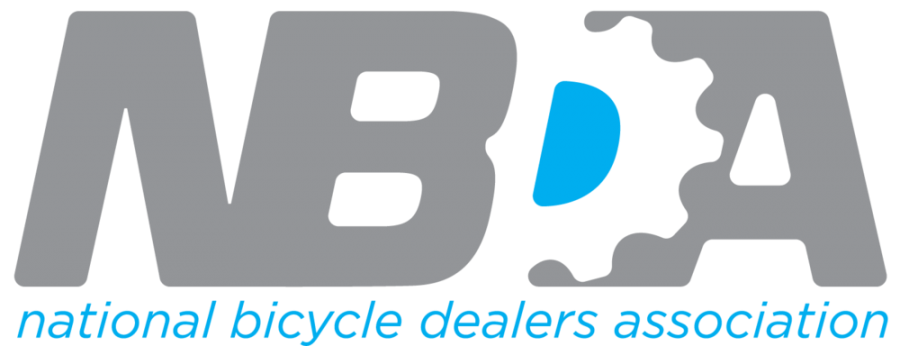How to Run a Profitable Bike Shop: Part 2
How to Run a Profitable Bike Shop: Part 2 This week, Dave DeKeyser, a Business Consultant for the NBDA, returns to interview Todd Cravens, Vice President of Business Development at Quality Bicycle Products. Dave and Todd talk about trends and best practices that they have observed for running a profitable bike shop. In his position at QBP, Todd works with many bike shops at all levels and it has given him great insights into the hard numbers that he shares with us today.
Todd Cravens
Todd is responsible for identifying and developing strategic business opportunities with new and existing customers, suppliers, brands, segments, and QBP consumer brands to help maximize their long-term sales and profitability.
Cravens is a 24-year employee at QBP, where he’s worked with nearly every stakeholder and in a variety of Director roles, including his most recent position as Director of National Accounts. He’s worked in, owned or served bicycle retailers for more than 40 years.
“Todd has accomplished much in his tenure at QBP and has a deep understanding of our industry and the needs of our stakeholders, plus great leadership skills and knowledge of our business,” said Rich Tauer, President of QBP. “He’s been working in the space of Business Development for some time, really defining what it means for us as we continue to transition from being a distributor to a bike company and service provider for retailers and suppliers.”
A tireless advocate who lives by the QBP mantra of putting every butt on a bike, Cravens has long worked beyond the walls to inspire new cyclists and connect them to great brands through retailers. He helped to coach a Minnesota National Interscholastic Cycling Association (NICA) high school mountain bike team; worked with the National Bicycle Dealers Association’s Profitability Project to facilitate best retail practices; and has been an active bike racer since 1975, most recently competing in gravel and endurance MTB events.
Support the show (https://nbda.com/articles/donation-form-pg511.htm#!form/Dona
Todd Cravens
Tue, 8/18 10:46AM • 32:53
SUMMARY KEYWORDS
retailers, business, bike, people, bike shops, pre-tax profit, buying, profitability, number, bit, factories, store, bicycle, inventory, items, sales, expense, margin, run, businesses
SPEAKERS
Todd Cravens, Rod Judd, Tara Kuipers, David DeKeyser, Kent Cranford
Rod Judd 00:10
You are listening to Bicycle Retail Radio brought to you by the National Bicycle Dealers Association.
David DeKeyser 00:16
Hello and welcome to another episode of bicycle retail radio. My name is David DeKeyser and I do retail consulting for the NBDA is P2 Consult program. You can find more information on that program and all the other great benefits the NVDA provides and the NBDA is website nbda.com. Today’s guest is Todd Cravens. Todd is the Vice President of Business Development at quality bicycle products. Todd has well over Forty years of industry experience. And with that, thank you, Todd, for taking the time to join us today.
Todd Cravens 00:45
Oh, thank you, David. I’m really pleased to be here.
David DeKeyser 00:48
First off, why don’t you give us a little bio on your experience over the years, and as you finish up, maybe you could go into what you’re doing day to day at QBP.
Todd Cravens 00:56
Okay, thank you. I was bitten by like bug about age 10 and not being able to sit shaken. So bicycles have been a personal passion of mine. And that morphed into working in stores through my youth in school and starting a store on campus in college and doing economic research on the common behavior of bike shops and businesses and college on to import work being a partner in a store in the Washington DC area in the 80s, working in manufacturer serrana. And then eventually coming to QBP. Working in customer service, product development, Product Management, purchasing sales, and in many cases, both things wrapped around retailer support at this point in my career. As the Vice President of Business Development, I’m the one tasked with looking to the future and developing things that will help our retailers and suppliers thrive. And so, on a daily basis, that does mean quite a bit of retailer contact both big and small. That’s part of how we’re trying to keep our finger on the pulse of what it is that retailers are experiencing needing and wanting. And there are times when Someone says they want something. And I might actually disagree and think rather, that somebody actually may want something but maybe need something else. And that if we talk about what’s happening in the way our world has changed post-COVID, and how shopping habits have changed and what many retailers have had to do to attack. So you can kind of adjust to whether it’s a new normal or not the new conditions, I’m not sure many people would say that those are things they wanted. But if we talk about retailers being available to consumers a variety of ways, whether it’s online or social, I would argue those would be things that retailers need. And so, you know, a daily basis can also be things I said on our credit committee. So I see a lot of bicycle shop financial information, I mean, the sign off-chain there, and it’s something that kind of developed a bit of a knack for in terms of helping me to understand the financial health of our retailers. And that can go to margin conversations with vendors when a vendor develops an item and gives them an app and said what they think the margin should be for a retailer. I’ve consulted with a number of vendors and been able to share with them that that actually that margins down Enough based on what bike shops average expenses are. And what I find is that oftentimes vendors don’t know what that number is. But we have real data. So you know what they are. And it’s something that happens behind the scenes, but something that I’ve done as well. So those are maybe a few bits and pieces. It’s a bit of a mixed bag on a daily basis.
David DeKeyser 03:17
Excellent. Yeah, we’ll dig into that profitability thing here in just a little bit. I think that that’ll be very interesting. The first major topic right now, as of today in the industry, I think a lot of retailers are wondering about inventory levels, what that’s going to look like over the next few months. What you take us on that. And do you have any suggestions for what retailers could do either to prepare if we think we’re going to have shortages? So basically, how did we get to where we are at this point in time and what can we do going forward?
Todd Cravens 03:50
Right, thank you. I think that you know, part of how we got here was that 12 manufacturers and distributors had forecast badass growth for spring of 20 Nobody was expecting what would come the devastating effects of COVID not only in the tragic loss of life but all the economic disruption, particularly as things really lit up in the United States and march for a period of time, we saw sales drop off at a rate of 30%, which is really not sustainable for virtually any business. And we had to take some very drastic actions in our organization, as in other companies out there if we look at this general industry, it was pretty scary. The switch flip, though, and cycling seemed to be something that people could do. I think, in many cases, Mike’s offer a more affordable solution that a new bass boat or a new jet ski or a new car, whatever that is. And so we saw, this has come roaring back through our retailers, many of the retailers we’ve worked with and spoken to, it talked about working hours and having the kind of business that those who have been around a long time experienced during the bike boom in the early 70s that they’ve been told about and to the point that has been so much growth for many people that is beyond stressful. It’s rather hard to continue to meet day after day. But as we go to some of the things that happened through this is starting to fall off a number of companies very quickly, canceled purchase orders or put them on the factories got this information and they made adjustments in many cases they were struggling with staffing their factories due to the closures and quarantines that staff had been in due to COVID issues in Southeast Asia. So as things kind of peeled back like that, a number of, again, factors you’re able to adjust. But when things very quickly flipped, and all of a sudden demand came roaring back. At that point, many of the light companies, ourselves included, came back to our factories and said, Oh no, we know you’re only at 80% capacity. But here’s 120 or 150% of what we originally thought we wanted, which kind of created a big gap for the factory to try to meet demand. If you throw in the fact that three of Shimano factories in Malaysia, Philippines and Singapore which make a lower-end middle-end product, very, very popular on the OEM side, high demand if you will, those factories were shuttered for anywhere from 30 to 45 days, and the That was a problem as well. So we’ve seen these kinds of supply-side shocks and some demand-side shocks as well, both the fall off and then there’s roaring back. And that so there have been some gaps for the manufacturers, if you will, to try to catch up. So we’ve seen quite a bit of pressure on them. And that’s both on the bike side and on the PMA side. So that’s a bit of kind of where we got there, if that makes sense, and really about advice and dealing with it. It is so challenging for everyone, My heart goes out to everybody here. I really think this is the place where you do lead to the relationships you created. So hopefully the suppliers you’re working with you have a good credit relationship, you know, the credit managers are going to need to know that you’re likely going to need more credit because you’re buying more and buying more frequently. Hopefully, there’s enough cash flow is being generated that you can not only seek that but also continue to meet your credit obligations. We’re a big believer as a company and just in time inventory that gives retailers more flexibility, and we fund our inventory such that retailers can order more frequently from us get higher returns. And actually spin if you will more cash through the business but with a lower capital requirement, so we’re big believers and just in time inventory, we think you’ve got less at risk. I think that what we’re seeing right now with demand, this is a place where, especially on bread and butter items, retailers should probably take a longer view of days on-hand inventory, because they’re things you just don’t want to be out of, you don’t want to be added to you want to be out of tires, you want to be out of cables on the service side as an example. But there are also accessory items that should go on every bike or that people should be buying from you that you also don’t want to be out of. So I think a retailer at this time should probably put more days on hand in stock. And that’s because the product is available. It’s certainly run out in some category, some items. And that’s been challenging again, for everybody because everybody wants it. I think those are a couple of ways to get at it traditionally. I think you have to be more comfortable with substituting out something maybe even a product line that you add a product line because it’s available and it’s filling a need that you have and it’s maybe not your first choice but you know, I was talking to a large retailer and NVDA member of course who made the comment to me that as well. suppliers run out of a poor group of bikes. And when he said, What should I do? I’m thinking about adding another brand. The vendor said, Oh, don’t do that. That’s a horrible idea. The retailer asked, Well, how long will he be? And he’s like at least five weeks. Well, that’s not acceptable. This retailer can’t be without bikes for five weeks. So he did bring on another line. And I’m not suggesting that retailers just kind of willy nilly jump lines. But I think you have to be open to meeting those opportunities as they become available to you. Does that make sense? Does that kind of get out at David?
David DeKeyser 08:29
Absolutely. Yep. I think that’s great advice. And it’s interesting to hear. I’ve heard a few people discuss where bikes were made and how that might affect where they’re coming from. But when you paint the picture of these parts are coming from there’s also parts included when you’re buying bikes, so it’s just that whole supply chain has been interrupted across the board. So even if you could get parts of a bike, you may not get the whole bike.
Todd Cravens 08:55
Well, that’s true. And the other piece to throw in there is it comes out of a tariff We as a bike industry has had to deal with is that a number of manufacturers, ourselves included, are in the process of moving our supply chains. And in a naive world, the feedback I’ve gotten from some retailers, it’s a little bit jaded. It’s like, I don’t know why to do that. I mean, it’s really easy. Just go to a different country, you know, kind of like a Burger Kings out, you go to McDonald’s kind of a thing, and it doesn’t quite work that way. And what we found is in the best possible instance, and that’s with everything working perfectly and working with existing people that you know, you’re 18 months, and you could easily be 22 to 24 months. Because you go to different countries, you’ve got to qualify, all of the manufacturing, you’ve got to qualify all the samples, and then your batch testing when you’re doing production. And so I wish it were easy but not and on the one hand, actually, it’s rather making it having all these hurdles, it slows you down to be sure, but particularly with the batch testing, it allows you to catch things upstream so they never hit the retailer and they never hit the consumer so you catch things before they’re a problem. It is a fairly involved thing. So yeah, that’s been a challenge for everyone.
David DeKeyser 10:03
So let’s kind of turn a corner here. You and I had had a conversation. And you would allude to this in your introduction about profitability. And what QBP has found the average stores pre-tax profits are overall what they are for good stores. Why don’t we kind of dive into that a little bit? I think that this is something that retailers would probably find interesting if they don’t know how they stack up to other retailers, A and B, what the potential is, or them profitability wise.
Todd Cravens 10:35
I’ve been in the industry, as you mentioned, for a very long time, ever since I can remember. So I started working in bike shops in eighth grade, I’ve always been told you can’t make a lot of money in the bike business, or, you know, kind of the old thing that we kidded about how do you make a small fortune start with a large fortune and you know, it’s like as I spent time as I did research and that as I owned a store and then as I continue to support retailers throughout my career, I have come across a number of retailers that have made a very comfortable living, and in some cases creating wealth. And they run really disciplined businesses. And they certainly work hard. We all work hard, but they pull it off. And so when I think about that, I know what’s out there. And in most cases, those retailers are running their business like a business and some retailers that I’ve spoken to take offense when I say that, and my intention is never to be offensive, but it’s rather to reflect on what it is you’re doing, and are you getting the result you want. And if you’re not, then you need to change and you change by looking at what’s causing your results. Right. So you know, we’ve seen pre-tax profit between 2.2 and 3.9%. On average, frankly, with sgma is from 35 to 45%, which is quite high. If you think of a vendor crowing about an item that is digit percent gross profit margin or that so keep what we have called Keystone over the years. You know, there’s not a lot left over frankly, yet. We have seen also retailers that are pushing 10 to 12% pre-tax those retailers and it’s not that you know, running on a shoestring or doesn’t have any overhead Don’t pay their staff or things of that nature. They’re significantly more efficient. They do run leaner, as it relates to SAS or their staff gets worked pretty hard. But they are also really operating on the three kinds of a leverage point to the income statement around how they maximize sales, how they maximize margin, and that comes out of how they buy. And then lastly, their expense Hawks. And now the expense part is the least alluring part of the job. If you like bikes, you don’t really want to be negotiating with your insurance broker and the people that provide your internet and your landlord and utility company on and on and on. But that’s what we found, as we’ve done the research and income statement says we’ve visited retailers as we’ve done work with v2, we did work with v2 over a period of time there were definitely those retailers that did that. And I think it goes back to, frankly, the basics of are you buying and selling items on which you can be profitable and again, that’s for some people. That sounds ridiculous to say it that way. I continue to be floored that retailers sell products on which they aren’t profitable. And then Kind of insult to injury is on which they do not know that they’re not profitable. And that’s a really, really scary combination.
David DeKeyser 13:07
One question I had that I kind of came back to after our last conversation was the pre-tax profits. The NBA, in their cost of doing business surveys, has a term owners’ compensation and profits to gross sales and those numbers that you’re talking about anywhere from 2.2% to 1012, or 15%. Those do not include the owner’s salary, is that correct?
Todd Cravens 13:30
Those numbers actually do include the owner. So do I do that there are what I would call a fully loaded income statement? And so no, they do, in fact, for that 2.2 to four-point or 3.9. These aren’t people that are writing a massive distribution at the end of the year, you know, and so, exact comp shoots off the page. You know, these are folks that are operating just above or just below average costs, and it’s kind of a precarious place to be the people that are running tidy your businesses with higher pre-tax profits, the difference we see that really drives at home The expense piece we’ll see a five-point Delta on the expense, sometimes seven points. And sometimes it’s because the retailer really did bread and water for the first several years and that retailer was able to get a mortgage to buy a building and eventually pay him or herself rent. And at the end of a 35-year run, they didn’t just have a business with a pre-tax profit to sell. So there could be multiple, they had good inventory, even though it’s going to be written down on a sale, but they had a building they could either sell or rent. And so you know, they’ve got they’re building a tangible asset for which there’s a public market. You know, there are a lot of stores that are not making a lot of money that at the end of 30 years, if they’re operating maybe two to 4%, pre-tax, they’ve got okay inventory, they rent a building, even if they’re pulling down, let’s be generous and say 5% because the math is easier, and they’re doing a million dollars. And you say that somehow you talk somebody into paying, you have five times multiple, we’re retiring on what it would be a very small amount of money, so to speak, and so think it’s a bit of the battle. What you find on a daily basis, and that’s how you win the war at the end, if you will, maybe that language is through martial, but nonetheless, you’ve really got to be engaged, measuring regularly. So I still know retailers, they look at annual balance sheet income statement, they don’t look at monthly or weekly. And I’m a big believer in charting your progress because the sooner you find what your results are, if they’re what you want, we’ll do more of it. If they’re not what you want, figure out what’s causing it and change it so then you can get what you want.
Kent Cranford 15:29
This podcast is brought to you by NBDA, membership, and industry donors to continue providing education and content like the podcast you’re listening to now. We need your support, go to NBDA.com and join or donate today.
David DeKeyser 15:49
So one of the big discussions is always around the margin. And we talked about this a little bit and how to increase it and one of the topics you brought up was the idea of value pricing and you use the analogy sample from when you were a store owner. And I was wondering if you could kind of go through that real quick.
Todd Cravens 16:05
Sure, thank you be sure to qualify this for everybody I store in the 80s. It was before the internet, it wasn’t a Washington, DC suburbs, there was a strong personal income component. And it was during the 80s, which was kind of a gogo time in the economy, especially in Washington. But we were clear that there were certain items that customers didn’t shop you on, they just want to know that you had it and could fix it. For us. It was sealed 27 by one and a quarter chromed bolt-on roadwheels. We paid I think I want to say 865 if I remember right, and we sold them for 3499 all day. And again, the question was always not how much is it? It was rather can you do this and get me back on the road right now that taught us a valuable lesson one we tried to position ourselves as a shop that offered exceptional value, not prices, but exceptional value. So we were customer-centric, checked into our community involved in our community as well of course, but we did look at a number of things where we believe we could make more money and so we mark things As such now where there are some things that were just kind of insanely competitive, absolutely, we could get those things for people, but we didn’t stock them because we wouldn’t make enough money on them. And so, while I was an enthusiast and liked all the neat bike parts, we were a business first and had to be profitable. So I think that approaching it that way, knowing what those items are, and often those are service items. But even if we take that step further, I have seen retailers let the items being sold say at service be determined by the service advisor or the service manager, not by what the retailer’s chosen for assortment, that is where the retail will be most profitable. And I’ve often seen people sell things where they’re either trading dollars or losing money on a repair item when they should be making significantly a significant margin because again, they’re providing a service they can obviously pricing the labor to but it is a piece that can be a disconnect. So I think that value pricing matters as a way to approach your business. So do you have to know your market Absolutely? And yet No, but it will bear Yes, you do. So do you do some testing, of course, you’re going to probably lose a few people along the way customers that think that you’re not worth it? And we were very happy to tell you that we struggle with that at first because we didn’t really lose anybody. It was really, really hard when somebody accused us of charging too much. But interestingly, that didn’t ultimately have an impact that we could measure, as in proper sales down or things of that nature.
David DeKeyser 18:22
Fantastic. So in the big three items here for profitability, we’ve gone over expenses, which are the hard and somewhat boring part we’ve talked about. We’ve talked about margins when I’ve talked to retailers when I was a retailer, and now one of the things that always comes up, it’s just a very knee jerk way of improving their businesses to increase sales. And it seems like the easy way out, well, if I could just get my sales up and fill in the blank with the percentages, or the number of bikes, but you had stated that you need to be very mindful of the cost to increase those sales, and had discussed a multiplier of your pre-tax profits to determine if something actually works. And the example that we had discussed to me was so clear, and I think could be very helpful for retailers about an ad buy, and how you would determine if that was actually successful. And I think to give an idea to that increasing sales, you really need to increase sales if you’re going to spend money to increase the sales
Todd Cravens 19:29
agreed. And thank you, you know, it’s one of those things that I kind of struggle with getting to but I’ve seen it when people are considering an ad buy what for whatever medium you wish that’s agnostic, you spend $1,000, let’s say, which is not insignificant for any store. And I’ve seen retailers say, Well, I spent 1000, and I made about 1000 or 1100. dollars in sales. So you know, I just about broke, even so, I did okay because I got my name out there, you know, and first of all, I think that’s the wrong approach. When you’re evaluating any kind of expense and where you anticipate a return. You need to look at your pre-tax profit. If you can divide that into 100, to get an integer that tells you what the multiplier is how many sales dollars, you have to break even. And so again, because the math is easy in my head, you’ve got a 5% pre-tax profit. If you divide that into 100, you got a multiplier of 20 times that thousand dollars add by breaking, you even get to $20,000. If it doesn’t get you $20,000, you’ve lost money, because margins involved. I think it’s a handy little tool to evaluate whether or not something is worth it because you can put a hard measure on did it return your sales that it actually makes you money? And I think we often have gotten this from people in the advertising and marketing world when they come to us to say, Oh, no, this is going to be great for you, you’re gonna have a great ROI. Well, you now have a tool to determine whether or not it’s a great ROI or whether or not it’s an ROI at all. Maybe it’s a loss, right. Again, not a particularly alluring thing, but I think it’s a powerful tool to help you be a steward of your business because really for the retailer, if not you who sets the old Harry Truman, the buck stops here. And so that kind of really takes me to. It’s not that you shouldn’t be looking for opportunities. But I’m a big believer in making a plan and then executing your plan. And as you’re executing, you’re measuring and if it’s not going the way you want, you find out what’s the pinch, what’s the area that’s causing the problem, you fix it, and you move forward and keep measuring. I’ve kind of had the belief that because of the feedback, I’ve gotten more people to know what their functional threshold power is, then what their top five expenses are, and most importantly, what they’re doing about those sub-five expenses, because every year those are going on, and even if it’s only 1%, two or 2%. There. And I’ve heard people say it’s not really very much WellQBP if your top 10 expenses all go up 2%. That’s a lot.
David DeKeyser 21:44
Right.
Tara Kuipers 21:46
Have you heard of P2 groups and wondered what they are. P2 stands for the profitability project. And while profitability is that the focus of everything we do, we do so much more P2 groups Members share their expertise and their insights. They ask questions and they exchange resources to make sure every member is profitable and successful in every aspect of bike shop ownership. Reach out today so we can tell you more.
David DeKeyser 22:21
So I want to talk about competition a little bit between retailers. In a way, if you have two retailers in the same town, and they’re buying products, both from QBP, and they bought at the same product, and they hung up on the wall in their store, they have it priced the same. How can retailers either brand themselves or how do they compete at that point in time when basically the items are identical, the prices are identical, and even the place where they’re buying from is the same?
Todd Cravens 22:51
Yeah, that’s a great question. That’s a tough one too. I think it’s kind of easy to get mired in kind of call negativity around competition and the big believer that stores Have to differentiate themselves. And it’s really foundational to branding and I kind of hang it on as a retailer, how do you make yourself special, distinctive and memorable, and in doing in such a way that people will pay you? That’s kind of the essence of strategy. And you do have to figure that part out, a lot of retailers will say, Well, you know, we’re known for customer service, I can’t tell you how many have told me that some are really exceptional, most are not. Because if you say that you’re being held against how Lexus does service, for instance, regardless of whether or not your Lexus dealer and kind of the other service experiences retailers across the board have provided to this consumer. So I really think that you try to move away from competing on the thing, and more about how are you more alluring to the consumer? How are you working in the community in a way that is creating riders that are perhaps supporting the community? You know, one way to think about it? This is an old example. But when I owned a store, my wife taught at a private school, they had an auction every year we were a retailer. So people came for us to sponsor Little League and other things. We didn’t do that because it wasn’t like it didn’t make sense to us. But the bike made sense to us. So we were involved in things that promoted cycling. And we donated, I was not clear that I wanted to do it. But I liked the school in one sport, my wife in school, so we donated an expensive road bike at the time. And those were popular. And a very interesting thing happened. And this is again, we learned a lesson here, we backed into it, we weren’t aware of it. Because we supported school. All of a sudden, teachers were buying bikes from us. And all of a sudden, parents were buying bikes for themselves and their children because we supported the school. And so when we cost out what we had put into it, we actually did get a very strong return in a long term way. And really, I think what this highlight is, again, what are you doing this making yourself distinctive? How are you reaching out to communities in a way that is important to them that is meaningful and that they would want to come back because a lot of retailers will give you a narrative on how well they do in every category across the board, whether it’s women or people of color or minorities and I would challenge Specifically, what are you doing that’s meaningful? And it should probably learn that from somebody else rather than just what you think if that makes sense, but I think the differentiation is a really big piece. And that’s a tough one. Because at that point, we’re selling commodities. We absolutely are.
David DeKeyser 25:12
So every day, you and QBP, obviously, are plugged in to what’s happening with retailers, and you’re speaking with retailers you’ve seen over your years, obviously a ton of great retailers and you’ve seen those who have struggled. Is there something that you have found that is just a foundational difference between these different stores and how they’re doing instead of mindset? Is that a certain skill? Is there anything that you’ve ever been able to distill down as to the difference between those who are really succeeding not just in their community, but also financially?
Todd Cravens 25:56
Gosh, I think the biggest piece and it may sound tedious but If that concept around business acumen really matters, and you know, it’s treating the business like a business on an everyday basis, and it is knowing your numbers, and it’s Frankly, I take it back to me in a step back further setting a goal, okay, I’ve set the goal, how do I get there? And so those retailers that have prospered, they lead into their business every day. And it’s not that they don’t take time off, but they are extraordinarily conversant. They do stay on top of business and trends in the industry. They have learned things like real estate, whether they’re renting or whether they’re buying, I can think of one who’s quite successful and he says location, location, location is not a cliche, and he’s right. He’s pretty savvy about where he puts a store. As an example, I think others lookout a little bit further into the future wondering how else they can be efficient. I can think of one who made a massive closeout cash buy which got him even a better origin. This would have been in the middle 90s and he then computerized his business when computerization is more expensive. But in doing so that gave this retailer and his business partner extraordinary information to run the business even more efficiently and more effectively, again, being in the numbers. So I think that being in the numbers is probably it. And for some people, I know that’s gonna sound like, Oh, that’s not why I got in the bike business. And I would actually put it out there. It’s not either-or it should be and, and if you own the business, it kind of has to be an regardless of whether or not it’s your favorite thing. You just can’t pay attention to it. And as you get in the numbers, and as you understand your performance, and what drives it, and you increase that performance, you can ultimately become more profitable. And if you’re more profitable, I would argue that profit just represents a choice, the more your profit, the more choices you have. And that’s kind of a cool place to be able to have choice versus at the end of the year, having and if there’s any money left, that’s probably an inventory, which is typical, but you know, not really kind of having a paltry existence. So I think there’s an opportunity there, but I think it’s really learning your business. If you don’t know it. You’ll If you got a mentor, you work with another person in a business who understands it. There are things like community college classes just even on basic things like cost accounting, but otherwise, you know, you’re cooking a turkey in an oven, but you don’t have a thermometer. So you don’t know if it’s done or not. And that’s a problem.
David DeKeyser 28:13
Right? Right now it feels a little bit like retailers and everybody is kind of hitting the reset button. In a way, I think that inventories in the stores are they’re obviously able to sell through a lot of things. So they’re kind of able to clean house, but retailers are also and this has been discussed quite a bit is how tired everybody is right now. And even you guys there was an Instagram post and CBeebies Instagram page that I saw last week, it was all hands on deck, absolutely. packing boxes and everybody’s working longer and harder as far as the next several months or a year and nobody has a crystal ball obviously, but the things that retailers have learned in operating their businesses and how many times and how fast they’ve had to pivot in the last 60 or 90 days. Do you feel it? That’s going to be, ultimately, possibly a positive for how retailers and the whole industry has learned to completely change day to day in the beginning week to week and now kind of month to month. In the end, do you think it may be a net positive for operations? I believe so. Because to be sure, it’s hard. And I know retailers are beyond tired, and often 70-80 hours don’t get it. And so my heart goes out to them. I know, it’s a challenging time, I kind of think of stress on top of stress. And there are a lot of times in our personal life or in work, that we’re doing all these things that are the first time ever, but then successively, right. So that’s really stressful. And so I do believe that some of the things we’ve learned
Todd Cravens 29:45
will serve us one is just the ability to change and to pivot. Sometimes it’s forced upon us and I would argue that would be right now, other times there’s an opportunity and we take a risk, but if we think about it, you know, we worked hard to support people for bikes to get bike shops, nationally listed as essential businesses, because we deeply believe in our hearts bike shops are essential businesses, that was important for us because we believe that designation, a lot of a number of retailers to continue to do business if they chose some chose not to because they were worried about health, I totally understand and respect that. But a number did and add to, to your point change how they were doing business by appointment more online, through Facebook, any number of things that allowed them to serve their communities and be accessible to their customers. And, you know, even when I think about the numbers of customers that have chosen to sign up for a retail fulfillment, or they’ve created a stronger online presence, for a number of people, they had no interest in doing that, with these significant changes in public health policy and the challenges that we were all dealing with a number of people leaned in and based on the numbers we’re seeing, it seems to be making a difference. So I guess in the end, I think most people don’t like change. I know I’m in that boat. However, I know that being able to be open to change and then understanding how to Work through change might be one of the most important skills I’ve ever learned at QBP. Because it allows us to continue to develop and grow either again, because it’s forced upon us or because there’s an opportunity if that makes sense. Absolutely.
David DeKeyser 31:13
Todd, this has been very informative. We really appreciate that you took the time today. Do you have any final thoughts or last words for us here as we start to wrap this up?
Todd Cravens 31:23
Oh, gosh, Thanks, David. It’s just a pleasure to be on the podcast. And thank you so much. You know, I really just have such profound respect for our retailers out there and the services they provide the community, we really believe bikes solve a lot of problems. And we think that mic shops are positioned to be able to be part of the solution, which is really magical. Not all businesses can say or do that or even feel that good. So it’s just our great privilege to serve retailers out there as well as suppliers, getting the product to retailers. In both cases. These are really critical stakeholders that we want to support and continue to advocate on behalf of so I’d say thank you very much. Best of luck. I still think we have bright bright skies ahead of us. Excellent.
David DeKeyser 32:02
Well, everybody that was Todd Cravens, we thank him for being on the episode today. If you found this episode or other bicycle retail radio insightful and informative, please consider joining the NBA if you haven’t already by visiting nba.com as the NBA has benefits that can save you money and improve your business. Ultimately your membership adds to the collective voice so the specialty bicycle retailer in the NBA is efforts to represent and advocate for your interests. Thank you, everybody, for listening.
Rod Judd 32:29
This has been Bicycle Retail Radio by the National Bicycle Dealers Association. For more information on membership and member benefits, join us @NBDA.com
 David DeKeyser and his wife Rebecca Cleveland owned and operated The Bike Hub in De Pere, Wisconsin, for nearly 18 years. In 2018, they sold the business and real estate to another retailer based in a nearby community. David now writes the Positive Spin series on Bicycle Retailer and Industry News and he writes articles for the NBDA’s blog, Outspokin’. David also provides business consulting through the NBDA’s P2 Consult Program.
David DeKeyser and his wife Rebecca Cleveland owned and operated The Bike Hub in De Pere, Wisconsin, for nearly 18 years. In 2018, they sold the business and real estate to another retailer based in a nearby community. David now writes the Positive Spin series on Bicycle Retailer and Industry News and he writes articles for the NBDA’s blog, Outspokin’. David also provides business consulting through the NBDA’s P2 Consult Program.
 The NBDA has been here since 1946, representing and empowering specialty bicycle dealers in the United States through education, communications, research, advocacy, member discount programs, and promotional opportunities. As shops are facing never-before-seen circumstances, these resources offer a lifeline. Together, we will weather this. We at the NBDA will not waver in our commitment to serving our members even during this challenging time—but we need your support.
The NBDA has been here since 1946, representing and empowering specialty bicycle dealers in the United States through education, communications, research, advocacy, member discount programs, and promotional opportunities. As shops are facing never-before-seen circumstances, these resources offer a lifeline. Together, we will weather this. We at the NBDA will not waver in our commitment to serving our members even during this challenging time—but we need your support.
Now is the time to become a member as we join together to make one another stronger. Whether you’re a retailer or an industry partner, your membership in the NBDA is one of the best investments you’ll make this year.
Learn more about the benefits of being a member and join now.
